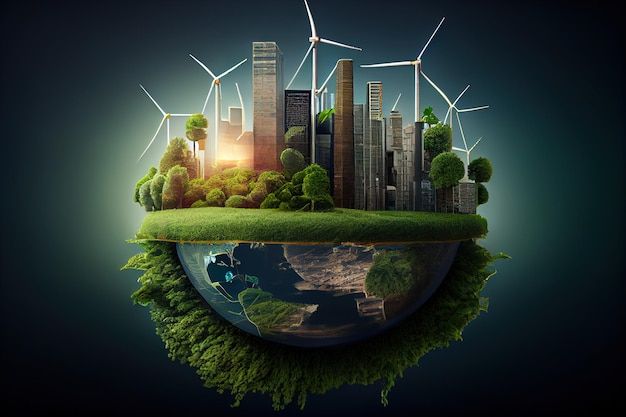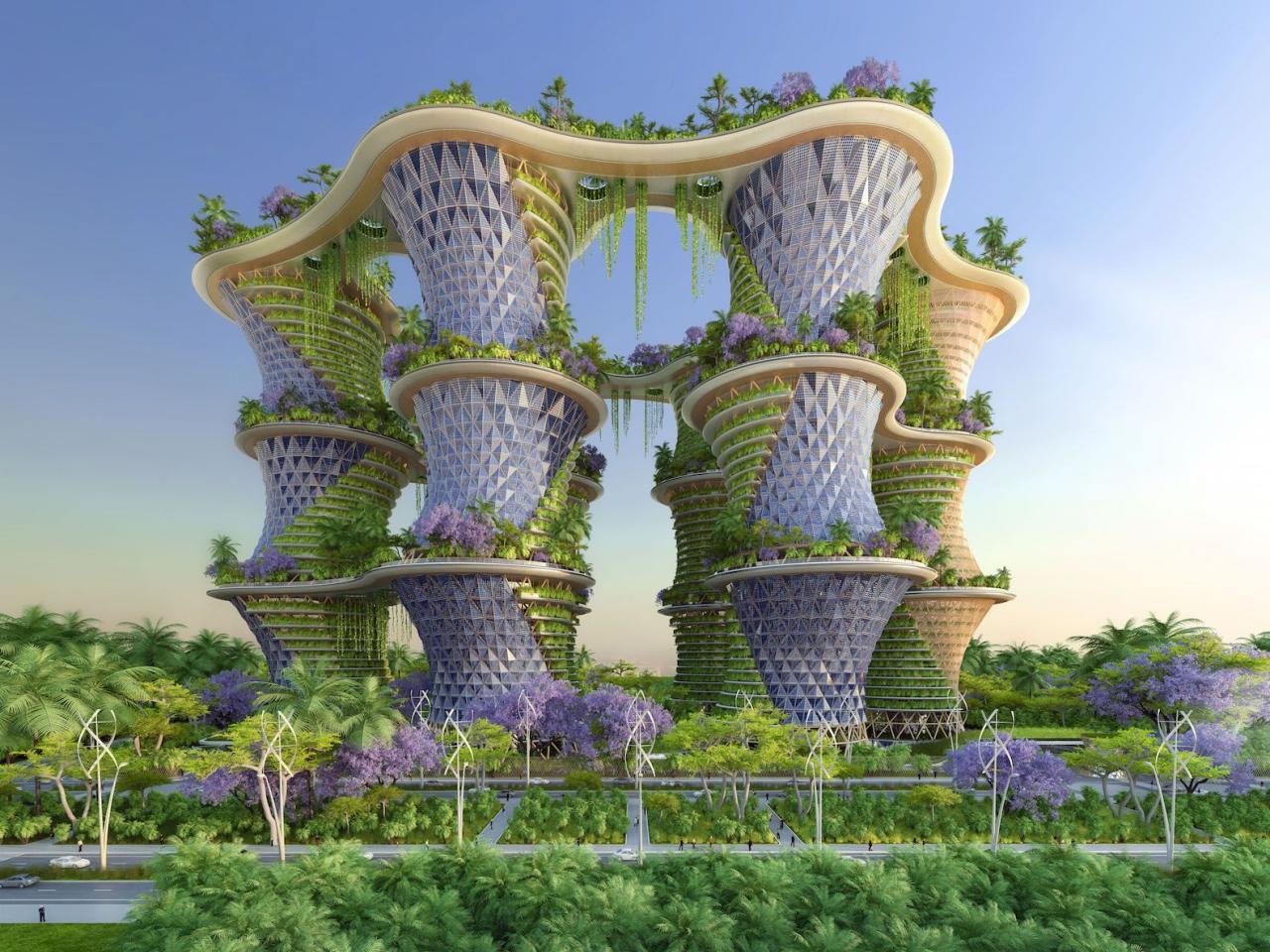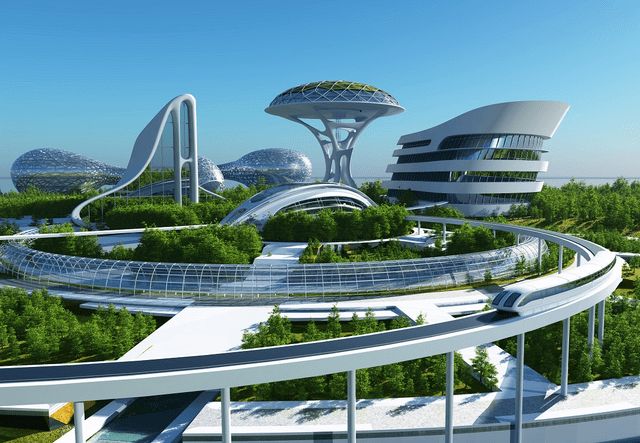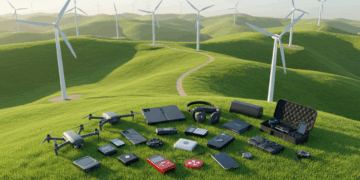In an era defined by environmental urgency and resource scarcity, the pursuit of sustainable innovation has transcended being a mere ethical choice to become a fundamental economic and societal imperative. This vital movement encompasses the development and implementation of new products, processes, and business models that actively minimize negative environmental impact, optimize resource utilization, and foster long-term ecological balance, all while driving economic growth and social equity. Far more than just ‘going green,’ sustainable innovation is about fundamentally rethinking how we produce, consume, and live, paving the way for a truly green future unlocked by ingenuity and purpose. It’s the engine driving the transition from a linear, ‘take-make-dispose’ economy to a circular, regenerative one.
The Urgency for Sustainability: Why Innovation is Critical
To truly grasp the paramount importance of sustainable innovation, we must first confront the pressing environmental and resource challenges facing our planet and societies today. The consequences of unsustainable practices are becoming increasingly evident, demanding transformative solutions.
A. Global Environmental Crises
Our planet is experiencing unprecedented environmental stress, primarily due to human activities that have historically prioritized economic growth over ecological well-being.
- Climate Change Acceleration: The rising concentration of greenhouse gases from fossil fuel combustion and industrial processes is leading to global warming, manifested through extreme weather events (heatwaves, floods, droughts, wildfires), rising sea levels, and disruption of ecosystems. Innovation is crucial for developing renewable energy, carbon capture, and climate-resilient infrastructure.
- Resource Depletion: Finite natural resources, including fossil fuels, minerals, and fresh water, are being consumed at unsustainable rates. This poses risks to long-term economic stability and equitable access, highlighting the need for innovation in resource efficiency, recycling, and alternative materials.
- Biodiversity Loss: Human expansion, habitat destruction, pollution, and climate change are driving species extinction at an alarming rate. This loss diminishes ecosystem resilience and the critical services nature provides (e.g., pollination, water purification), underscoring the role of innovation in conservation and regenerative practices.
- Pollution Proliferation: Air, water, and soil pollution from industrial emissions, agricultural runoff, and plastic waste have severe impacts on human health and ecological systems. Sustainable innovation offers pathways to cleaner production, waste reduction, and effective remediation technologies.
- Land Degradation: Deforestation, overgrazing, and unsustainable agricultural practices contribute to soil erosion, desertification, and loss of arable land, threatening food security. Innovation in sustainable agriculture and land management is essential.
B. Economic and Social Imperatives
Beyond ecological concerns, the drive for sustainability is increasingly recognized as an economic necessity and a path to greater social equity.
- Rising Resource Costs: As finite resources become scarcer, their costs inevitably rise, impacting business profitability and consumer prices. Sustainable innovation can mitigate this by reducing resource dependency and promoting efficiency.
- Regulatory Pressures: Governments worldwide are implementing stricter environmental regulations, carbon taxes, and Extended Producer Responsibility (EPR) schemes. Businesses that innovate sustainably can adapt more easily and gain a competitive edge.
- Consumer Demand Shift: A growing segment of consumers, particularly younger generations, are actively seeking environmentally responsible and ethically produced goods and services, influencing market trends and brand loyalty.
- Investment Community Focus: Investors are increasingly factoring Environmental, Social, and Governance (ESG) criteria into their decisions, channeling capital towards sustainable businesses and pressuring others to reform. Sustainable innovation attracts impact investment.
- Brand Reputation and Risk Management: Companies perceived as environmentally irresponsible face significant reputational damage and increased operational risks (e.g., supply chain disruptions from climate events, public backlash). Sustainable innovation mitigates these risks and enhances brand value.
- Social Equity and Public Health: Environmental degradation disproportionately affects vulnerable communities, exacerbating social inequalities. Sustainable innovation can lead to cleaner environments, better public health, and more equitable access to resources.
These powerful drivers underscore why sustainable innovation is not a luxury, but a strategic imperative for long-term viability and positive global impact.
Core Principles of Sustainable Innovation
Sustainable innovation is not a singular technology, but a holistic approach guided by principles that re-imagine value creation. It moves beyond incremental improvements to fundamental systemic change.
A. Systems Thinking and Life Cycle Assessment (LCA)
A foundational principle is systems thinking, which means understanding that every product, process, or service exists within a larger interconnected system. This approach involves:
- Holistic Perspective: Recognizing that environmental impacts are not isolated but occur across the entire value chain, from raw material extraction to manufacturing, distribution, use, and end-of-life disposal or recovery.
- Life Cycle Assessment (LCA): A methodology used to evaluate the environmental impacts associated with all stages of a product’s life, from raw material extraction through processing, manufacturing, distribution, use, repair and maintenance, and disposal or recycling. LCA helps identify true hotspots of unsustainability and informs innovation efforts.
- Avoiding Problem Shifting: Ensuring that a solution in one part of the system doesn’t create a new, worse problem elsewhere (e.g., developing an ‘eco-friendly’ product whose manufacturing process is highly polluting).
B. Circular Economy Principles
Moving away from the traditional linear ‘take-make-dispose’ model, sustainable innovation is deeply rooted in the circular economy. This involves designing out waste and pollution, keeping products and materials in use, and regenerating natural systems.
- Design for Longevity and Durability: Creating products that last longer, are more robust, and can be easily repaired.
- Design for Disassembly and Recycling: Ensuring products can be easily taken apart at end-of-life, and their components or materials can be efficiently recycled or reused.
- Resource Loops: Establishing closed-loop systems where waste from one process becomes input for another.
- Product-as-a-Service Models: Shifting ownership from the consumer to the manufacturer, who retains responsibility for the product’s entire lifecycle, incentivizing durability and efficient recovery (e.g., renting tools, rather than buying).
C. Dematerialization and Decoupling
Dematerialization refers to reducing the total amount of materials used to deliver a particular functionality or service. Decoupling aims to separate economic growth from resource consumption and environmental impact.
- Efficiency Gains: Innovating to use fewer raw materials, less energy, and less water in production and consumption.
- Virtualization: Replacing physical products with digital services (e.g., streaming music instead of buying CDs, e-books instead of physical books).
- Shared Economy Models: Leveraging shared resources (e.g., car-sharing services) to reduce individual consumption and the overall need for products.
- Lightweighting: Designing products with lighter materials that require less energy for transport or operation (e.g., lighter vehicles).
D. Renewable Energy Integration
A cornerstone of sustainability is transitioning from fossil fuels to renewable energy sources. Sustainable innovation actively drives this transition.
- Renewable Energy Technologies: Innovating in solar PV, wind turbines, geothermal, hydro, and next-generation energy storage solutions (batteries, hydrogen).
- Energy Efficiency Technologies: Developing smart grids, energy-efficient appliances, building management systems, and industrial processes that significantly reduce energy demand.
- Distributed Energy Systems: Moving towards decentralized energy generation and microgrids, enhancing resilience and reducing transmission losses.
E. Bio-Inspired Design (Biomimicry)
Biomimicry is an approach to innovation that seeks sustainable solutions by emulating nature’s time-tested patterns and strategies.
- Learning from Nature: Studying how natural systems work (e.g., how a leaf captures solar energy, how a beetle survives in the desert) to inspire novel designs and processes.
- Non-Toxic Chemistry: Developing materials and processes that are inherently non-toxic, biodegradable, and safe for ecosystems, mimicking nature’s benign chemistry.
- Closed-Loop Systems: Emulating nature’s efficient nutrient cycles and waste-free systems.
- Resilience and Adaptability: Designing systems that are inherently resilient and adaptable, like natural ecosystems.
F. Social Equity and Inclusivity
True sustainable innovation extends beyond environmental concerns to address social justice and inclusivity.
- Equitable Access: Ensuring that sustainable technologies and solutions are accessible and affordable to all segments of society, including marginalized communities.
- Fair Labor Practices: Promoting ethical supply chains, safe working conditions, and fair wages throughout the product lifecycle.
- Community Engagement: Involving local communities in the design and implementation of sustainable solutions, respecting local knowledge and needs.
- Job Creation: Developing new ‘green’ industries and jobs that provide meaningful employment and contribute to local economies.
Key Pillars of Sustainable Innovation in Action
Sustainable innovation manifests across various sectors through specific technological advancements, process changes, and business model shifts.
A. Renewable Energy Technologies and Smart Grids
The heart of a sustainable future lies in clean energy production and efficient distribution.
- Advanced Solar Solutions: Beyond traditional rooftop panels, innovation includes transparent solar cells for windows, flexible solar films for various surfaces, concentrated solar power (CSP) for utility scale, and highly efficient perovskite cells.
- Wind Energy Evolution: Development of larger, more efficient offshore wind turbines, vertical axis wind turbines for urban environments, and airborne wind energy systems (kites/drones).
- Next-Generation Energy Storage: Crucial for intermittent renewables. Innovation focuses on solid-state batteries, flow batteries, hydrogen fuel cells, compressed air energy storage (CAES), and thermal energy storage.
- Smart Grids: Integrating digital technology into electricity grids to enable bi-directional energy flow, real-time monitoring, demand-side management, and better integration of distributed renewable sources, enhancing efficiency and resilience.
- Geothermal and Hydropower Advancements: Innovations in enhanced geothermal systems (EGS) to unlock more widespread geothermal potential, and small-scale, run-of-river hydro systems that minimize ecological impact.
B. Circular Economy Business Models and Materials Science
Rethinking how products are designed, used, and recovered to eliminate waste.
- Product-as-a-Service (PaaS): Companies retain ownership of products and lease them to customers (e.g., lighting-as-a-service, tire-as-a-service), incentivizing durability, repair, and end-of-life recovery.
- Repair and Remanufacturing: Developing easier repairability (designing for repair) and creating robust remanufacturing processes where used products are restored to ‘as-new’ condition.
- Advanced Recycling Technologies: Innovations in chemical recycling for plastics, urban mining for valuable metals from e-waste, and textile-to-textile recycling to create high-quality secondary raw materials.
- Bio-based and Biodegradable Materials: Developing plastics from plant starches (PLA), mycelium (fungi-based materials), algae-based products, and wood alternatives that are renewable and designed to safely degrade or re-enter biological cycles.
- Industrial Symbiosis: Creating networks where waste or by-products from one industrial process become valuable inputs for another, mimicking natural ecosystems (e.g., heat waste from a factory used to heat greenhouses).
C. Sustainable Agriculture and Food Systems
Innovating to feed a growing population with reduced environmental footprint.
- Vertical Farming and Controlled Environment Agriculture (CEA): Growing crops indoors in vertically stacked layers, often without soil and using LED lighting. This dramatically reduces water usage, eliminates pesticides, and allows for local production year-round, minimizing transport emissions.
- Precision Agriculture: Using IoT sensors, drones, satellite imagery, and AI to monitor crop health, soil conditions, and livestock, optimizing water, fertilizer, and pesticide application, leading to higher yields with less input.
- Alternative Proteins: Developing plant-based meats, lab-grown (cultured) meat, and insect-based proteins to reduce the environmental impact of traditional animal agriculture.
- Reduced Food Waste Technologies: Innovations in smart packaging to extend shelf life, cold chain logistics optimization, and food waste valorization (converting waste into energy or new products).
- Regenerative Agriculture: Practices that aim to restore soil health, increase biodiversity, and sequester carbon, moving beyond simply sustaining yields to actively regenerating ecosystems.
D. Green Building and Sustainable Urban Development
Designing and constructing infrastructure that minimizes environmental impact and enhances urban living.
- Net-Zero and Passive Buildings: Designing buildings that produce as much energy as they consume (net-zero) or require very little energy for heating/cooling due to superior insulation and natural ventilation (passive).
- Smart City Technologies: Integrating IoT, AI, and data analytics to optimize urban services like waste management, public transportation, energy distribution, and traffic flow, reducing overall resource consumption and emissions.
- Green Infrastructure: Incorporating natural systems into urban design, such as green roofs, permeable pavements, and urban forests, to manage stormwater, reduce heat island effect, and improve air quality.
- Modular and Prefabricated Construction: Manufacturing building components off-site in controlled environments, which reduces waste, improves quality, and accelerates on-site assembly, often using more sustainable materials.
E. Pollution Control and Remediation Technologies
Developing advanced solutions to clean up existing pollution and prevent future contamination.
- Advanced Filtration Systems: Innovations in air and water purification technologies, including nanofiltration, advanced oxidation processes, and biological remediation for industrial emissions and contaminated water bodies.
- Carbon Capture, Utilization, and Storage (CCUS): Technologies that capture CO2 from industrial sources or directly from the air, then store it permanently underground or convert it into useful products (e.g., fuels, building materials).
- Waste-to-Energy and Waste Valorization: Converting non-recyclable waste into energy (e.g., through gasification, pyrolysis) or transforming waste materials into valuable resources for new products.
- Bioremediation: Using microorganisms or plants to detoxify contaminated soil and water naturally.
Challenges and Enablers of Sustainable Innovation Adoption
Despite its immense promise, the widespread adoption of sustainable innovation faces several significant hurdles that require concerted effort from various stakeholders.
A. Initial Investment and Perceived Risk
Sustainable innovations often require high initial capital investment for research, development, new manufacturing processes, or infrastructure upgrades. This can be a barrier for businesses accustomed to traditional, less capital-intensive models. The perceived risk of adopting unproven technologies or changing established supply chains can also deter early movers.
B. Lack of Standardized Metrics and Reporting
Measuring the true environmental and social impact of sustainable innovations can be complex due to a lack of universally standardized metrics and reporting frameworks. This makes it difficult for businesses to quantify their sustainability performance, compare solutions, and report effectively to investors or consumers, hindering widespread adoption and trust.
C. Policy and Regulatory Framework Gaps
While regulations are increasing, there are still gaps or inconsistencies in policy and regulatory frameworks that can hinder sustainable innovation. This includes a lack of clear incentives for sustainable practices, outdated regulations that favor linear models, or insufficient enforcement mechanisms. Policy must actively support and enable green transitions.
D. Supply Chain Integration and Complexity
Integrating sustainable innovations often requires fundamental shifts across complex global supply chains. This includes sourcing new, sustainable materials, establishing reverse logistics for circular models, and collaborating with a vast network of suppliers and partners. The complexity of supply chain transformation can be a major barrier.
E. Consumer Behavior and Awareness
Even with sustainable product offerings, consumer behavior can be a hurdle. Factors like price sensitivity, lack of awareness about sustainable alternatives, or an unwillingness to change established habits can slow adoption. Effective communication, education, and making sustainable choices convenient are critical.
F. Technological Maturity and Scalability
Many sustainable innovations, especially cutting-edge ones, are still in various stages of technological maturity. Scaling a successful pilot project to industrial scale can be challenging due to technical hurdles, infrastructure limitations, or the availability of specialized skills. Bridging the gap from lab to market requires significant investment and risk-taking.
G. Inter-disciplinary Collaboration and Knowledge Silos
Sustainable innovation inherently requires inter-disciplinary collaboration—bringing together engineers, scientists, designers, economists, social scientists, and policymakers. Traditional organizational structures and knowledge silos can impede this cross-functional cooperation, slowing down the development and implementation of holistic solutions.
Enablers for Accelerating Sustainable Innovation
To overcome these challenges, a multi-faceted approach involving technology, policy, finance, and culture is required to accelerate sustainable innovation.
A. Supportive Government Policies and Incentives
Governments play a critical role in fostering sustainable innovation by implementing:
- Carbon Pricing and Taxes: Making pollution expensive and incentivizing cleaner alternatives.
- Subsidies for Green Technologies: Financial support for renewable energy, sustainable agriculture, and eco-friendly manufacturing.
- Research and Development Funding: Investing in fundamental and applied research for sustainable solutions.
- Clear Regulations and Standards: Setting ambitious environmental targets and establishing clear frameworks for green products and processes.
- Public Procurement: Governments leading by example by prioritizing sustainable products and services in their purchasing.
B. Strategic Investment and Green Finance
The financial sector is a powerful enabler for sustainable innovation.
- Green Bonds and Sustainable Investing: Financial instruments that fund environmentally friendly projects and businesses.
- Venture Capital for Green Tech: Increased funding for startups innovating in renewable energy, circular economy, and sustainable materials.
- Blended Finance: Combining public and private capital to de-risk investments in sustainable infrastructure and technologies, especially in developing regions.
- ESG Integration: Mainstreaming Environmental, Social, and Governance criteria into investment decisions across all asset classes.
C. Digital Transformation and Industry 4.0 Technologies
Advanced digital technologies are crucial tools for sustainable innovation.
- IoT and Data Analytics: Real-time monitoring of resource consumption, waste generation, and environmental parameters for optimization.
- Artificial Intelligence (AI) and Machine Learning (ML): Optimizing energy grids, predicting equipment failures, designing new sustainable materials, and improving resource efficiency.
- Digital Twins: Creating virtual replicas of physical assets and processes to simulate and optimize performance for sustainability (e.g., energy consumption of buildings).
- Blockchain: Enhancing supply chain transparency, tracking sustainable materials, and verifying carbon credits.
D. Cross-Sector Collaboration and Partnerships
Addressing complex sustainability challenges requires collaboration across entire value chains and diverse sectors.
- Industry Alliances: Companies collaborating on shared sustainability goals and developing industry-wide standards.
- Public-Private Partnerships: Governments and businesses working together to fund and implement large-scale sustainable infrastructure projects.
- Research Collaborations: Academia, industry, and government entities pooling resources and expertise for breakthrough innovations.
- Open Innovation Platforms: Sharing knowledge, patents, and best practices to accelerate the adoption of sustainable solutions.
E. Education, Awareness, and Behavioral Nudges
Empowering consumers and citizens to make sustainable choices is critical.
- Environmental Education: Increasing public awareness about environmental challenges and the benefits of sustainable solutions.
- Transparent Labeling: Clear and trustworthy product labeling that highlights environmental and social impacts.
- Behavioral Economics: Designing interventions and incentives that ‘nudge’ consumers towards more sustainable purchasing and consumption habits.
- Green Marketing: Effectively communicating the value proposition of sustainable products and services to drive demand.
The Future Trajectory of Sustainable Innovation
The journey towards a green future unlocked by innovation is ongoing, with several exciting and transformative trends poised to accelerate its pace and broaden its impact.
A. Regeneration and Net-Positive Impact
The future of sustainable innovation will move beyond merely reducing negative impacts to achieving a net-positive impact and actively regenerating natural systems. This includes:
- Restorative Agriculture: Practices that rebuild soil organic matter and restore degraded land.
- Carbon-Negative Technologies: Innovations that remove more carbon from the atmosphere than they emit, such as direct air capture at scale or enhanced natural carbon sinks.
- Biodiversity Net Gain: Development projects that result in an overall increase in biodiversity.
- Waste as a Resource: Developing technologies and systems where all ‘waste’ is seen as a valuable resource for new production cycles.
B. Hyper-Personalized Sustainability
As data collection and AI advance, sustainable solutions will become increasingly hyper-personalized.
- Individual Carbon Footprint Tracking: Tools that provide real-time, actionable insights into an individual’s environmental impact, allowing for personalized reduction strategies.
- Tailored Sustainable Consumption: AI-powered recommendations for eco-friendly products, services, and lifestyle choices based on individual preferences and needs.
- Precision Resource Management: Highly localized and precise management of resources (e.g., water, energy) in homes and communities based on real-time demand and availability.
C. Bio-Revolution and Material Science Breakthroughs
The intersection of biology and technology will drive a bio-revolution in sustainable materials and processes.
- Engineered Microbes: Using synthetic biology to engineer microorganisms for bioremediation, producing biofuels, or creating novel bio-based materials.
- Self-Healing Materials: Developing materials that can autonomously repair damage, extending product lifespans and reducing waste.
- Advanced Bio-Fabrication: Growing materials (e.g., leather, textiles, building components) from living organisms in labs, reducing reliance on resource-intensive traditional methods.
- Smart Materials for Adaptive Design: Materials that can respond to environmental changes (e.g., alter insulation properties based on temperature) for dynamic, energy-efficient buildings.
D. Circular Economy at Scale and Industry Ecosystems
The circular economy will transition from niche initiatives to being the dominant paradigm, facilitated by entire industry ecosystems.
- Digital Product Passports: Blockchain-enabled digital identities for products that track their materials, origin, and repair/recycling instructions throughout their lifecycle, enabling efficient circularity.
- Cross-Industry Waste Exchange Platforms: Digital marketplaces for industrial by-products and waste streams to be exchanged as valuable inputs for other industries.
- Global Recycling Infrastructure: Massive investments and technological advancements in infrastructure for collecting, sorting, and processing materials for high-quality recycling at scale.
E. AI for Environmental Intelligence and Governance
AI will increasingly serve as a critical tool for environmental monitoring, prediction, and governance.
- AI-Powered Environmental Monitoring: Using AI to analyze satellite imagery, sensor networks, and climate models for real-time tracking of pollution, deforestation, water levels, and biodiversity.
- Predictive Climate Modeling: More accurate and granular climate models driven by AI to inform adaptation strategies and infrastructure planning.
- Automated Compliance and Reporting: AI-driven systems to automate the tracking and reporting of environmental compliance, reducing manual effort and ensuring accuracy.
- AI for Ecological Restoration: Using AI to identify optimal sites for reforestation, biodiversity restoration, and to manage invasive species.
Conclusion
Sustainable innovation is not merely a segment of the economy; it is the fundamental framework for the entire economy of the future. It represents a proactive and intelligent response to the escalating environmental and social challenges that define our era. By championing the development and widespread adoption of new technologies, processes, and business models that actively reduce ecological footprints, optimize resource use, and foster societal well-being, we are charting a course towards a profoundly more resilient and equitable world.
The journey towards a truly green future unlocked by innovation requires concerted effort, strategic investment, and deep collaboration across governments, industries, academia, and civil society. While significant hurdles persist—from high initial costs to the complexities of supply chain transformation—the burgeoning urgency and undeniable long-term benefits underscore that embracing sustainable innovation is no longer an option, but a critical imperative for survival and prosperity. It is the engine that will build a world where economic growth harmonizes with ecological health, creating a legacy of sustainability for generations to come.









